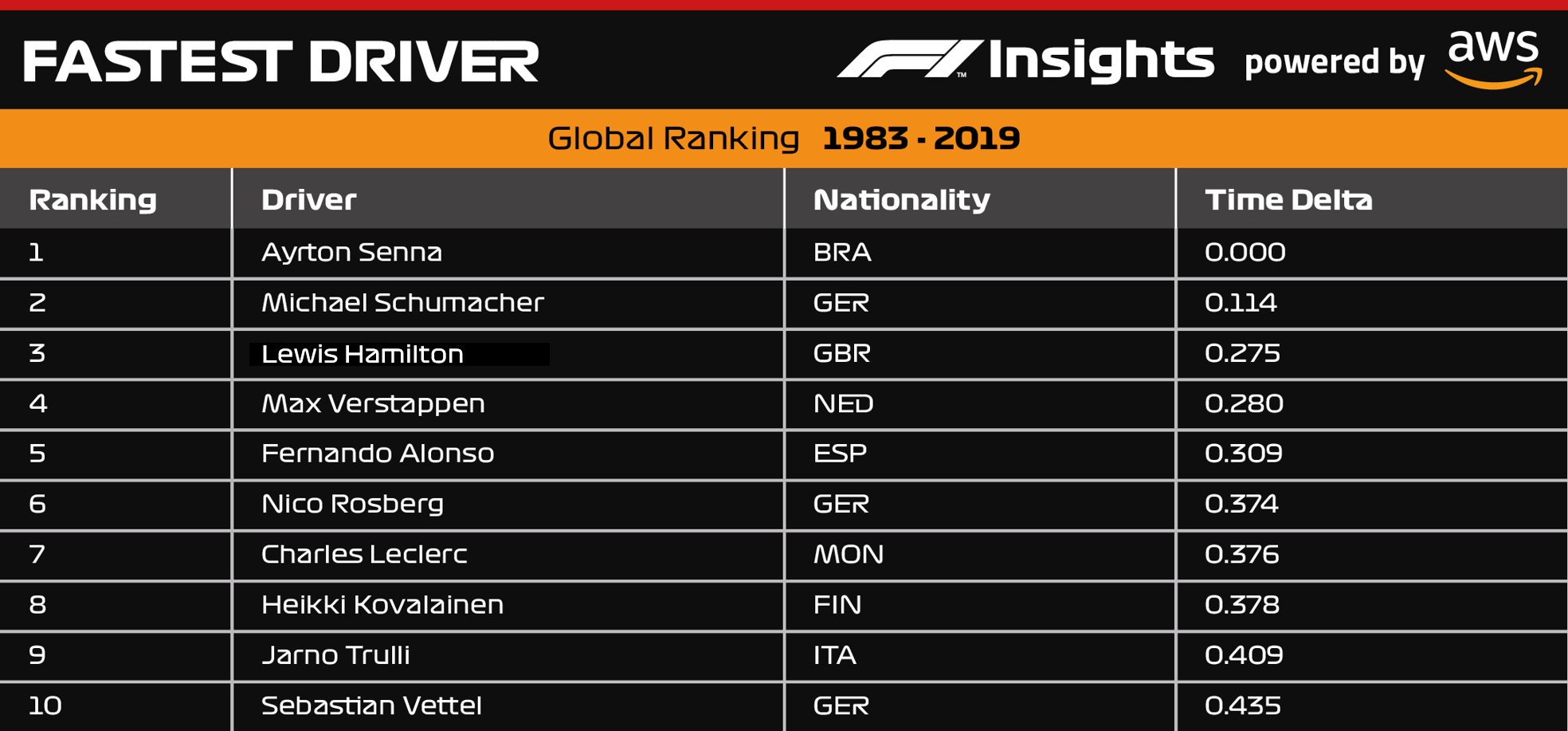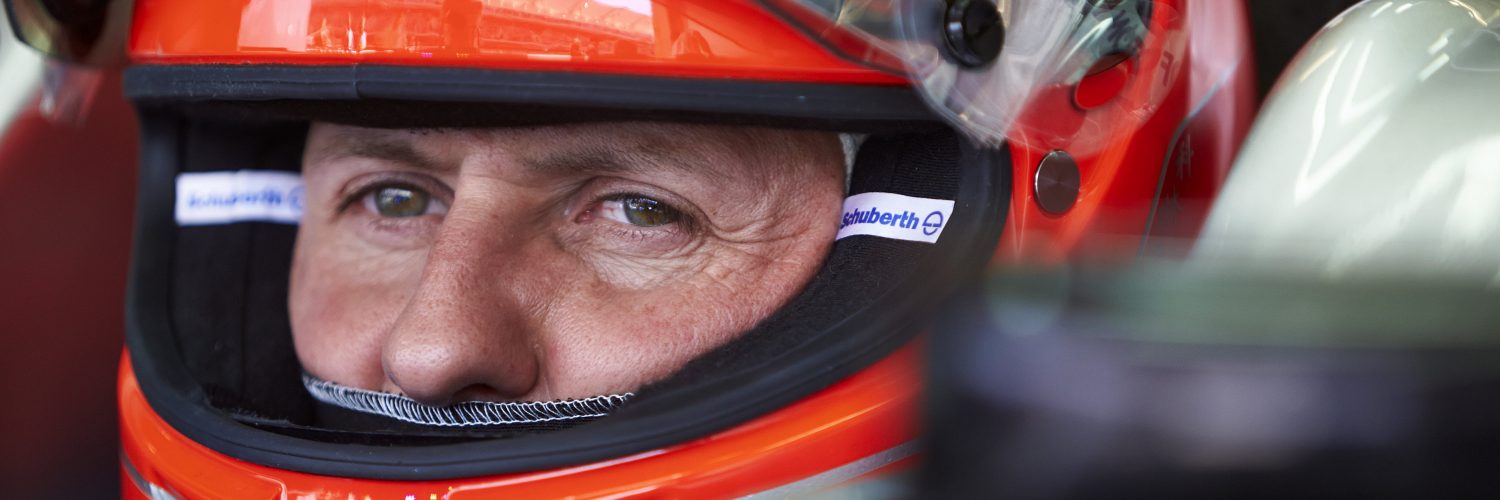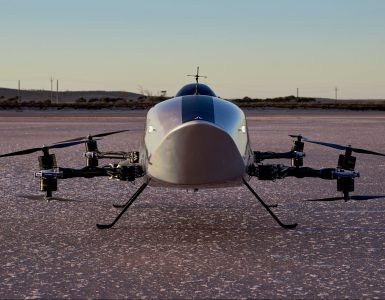Debating who’s the greatest is an age-old favourite amongst all sports fans. Who would win between Muhammad Ali and Mike Tyson? Was Maradona better than Messi? And who is the fastest racing driver of all time?
Now, as part of the Formula 1’s 70th anniversary year, Amazon Web Services (AWS) thinks it may have found the answer to the latter question by crunching together many different algorithms to discover who indeed was the fastest.
By using machine learning technology, AWS has compared drivers back to 1983 in their respective qualifying sessions against teammates to take the car variable out of the equation. In particular, the ‘Fastest Driver’ algorithm focuses on a driver’s performance output, comparing qualifying lap times between teammates only, to build a picture of how drivers from different generations compare.
And it would be no surprise to many that the great three-time World Champion Ayrton Senna came out on top, the Brazilian followed by seven time World Champion Michael Schumacher with a time differential of +0.114 seconds to Senna, current World Champion Lewis Hamilton ranked next fastest from current rival Max Verstappen.

“We’re excited to be able to continue to collaborate with an organization like F1, which has such a data-rich catalogue of information,” said Dr. Priya Ponnapalli, Principal Scientist and Senior Manager, Amazon ML Solutions Lab, AWS. “With machine learning, there are a number of opportunities to apply the technology to answer complex problems, and in this case, we hope to help settle age-old disputes with fans by using data to inform decisions. For us at AWS, it’s exciting to see machine learning being used in a way that everyone can relate to.”
Of course, as with all machine learning technology, this is just that. Machine learning and number crunching. The human element is one that simply can’t be taken into account, factors that include adrenaline and form. And the algorithm pitches drivers only against their teammates, some of which have clearly provided stronger competition than others.
With the data crunched over a 37-year period of F1 history dating back to 1983, the Amazon Machine Learning (ML) Solutions Lab also doesn’t bargain for changes in rules and difference of machinery. The great Sir Jackie Stewart and many others always said that Jim Clark was the fastest ever, and Stirling Moss and Juan Manuel Fangio would surely also be in the mix in any debate on the matter.
Nonetheless, it is indeed an interesting and fun experiment that will certainly accomplish something that all F1 fans will enjoy. And that is to generate yet more debate on the subject!
“This has been such an exciting project to work on, stripping back the man from the machine and looking at a wealth of data of each driver throughout history,” commented Dean Locke, Director of Broadcast & Media F1. “With the help of AWS we have been able to address something that has been asked for many years and rank drivers by the one raw attribute of pure speed in one flying lap, across the ages, regardless of how good their car is or isn’t.”
Rob Smedley, Director of Data Systems, F1 added: “Within the team environment this type of modelling is used to make key decisions on driver choices. As drivers are more often than not the most expensive asset of the team it is important that the selection process is as robust as possible. A process such as this therefore would be deployed by the F1 team’s strategists in order to present the most objective and evidence-based selection possible.
“Fastest Driver enables us to build up a picture of how the drivers compare, by analysing the purest indication of raw speed, the qualifying lap – and it’s important to note this pure speed is the only element of the vast driver armoury we are analysing here, to showcase the quickest drivers ever, which is very exciting.”




